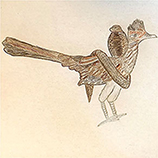
Mesurer les ondes cérébrales en classe
Par le passé, les chercheurs spécialistes du cerveau étudiaient le fonctionnement cérébral dans les laboratoires...
Jeunes examinateurs/trices


Par le passé, les chercheurs spécialistes du cerveau étudiaient le fonctionnement cérébral dans les laboratoires...


La notion de « profil » ou de « style » d’apprentissage est peut-être l’un des mythes les plus répandus concernant les...



Nous apprenons beaucoup en écoutant les sons qui ont du sens pour nous. Cependant, il est parfois difficile de...



Lorsqu’on évoque l’apprentissage, tu penses certainement à ce qu’on t’a appris à l’école. Sais-tu toutefois qu’au...






Sais-tu qu’il est possible d’étudier le cerveau en classe ? On pense généralement que ce n’est possible qu’en...


As-tu déjà essayé de te souvenir d’un mot dans une langue étrangère ? Quelle stratégie as-tu utilisée ? Dans plusieurs...



Qu’est-ce que la musique et pourquoi pense-t-on qu’elle est importante pour l’apprentissage ? Les sons et la musique...


Nous commettons tous des erreurs – et lorsque cela arrive, c’est une merveilleuse occasion pour le cerveau d’ajuster ce...




Le cerveau comporte certaines zones qui réagissent aux choses stimulantes ou gratifiantes, et d’autres qui nous...


Le développement du cerveau humain dure de nombreuses années. Cet organe, qui évolue considérablement pendant l’enfance...




La pratique des mathématiques simples semble être un exercice courant. 2 + 2 font 4 en France et en Chine. 7 × 8 est...




Dans la vie, on dort pendant presque 250 000 heures. Pourquoi doit-on dormir autant ? Le sommeil n’est pas le simple...

